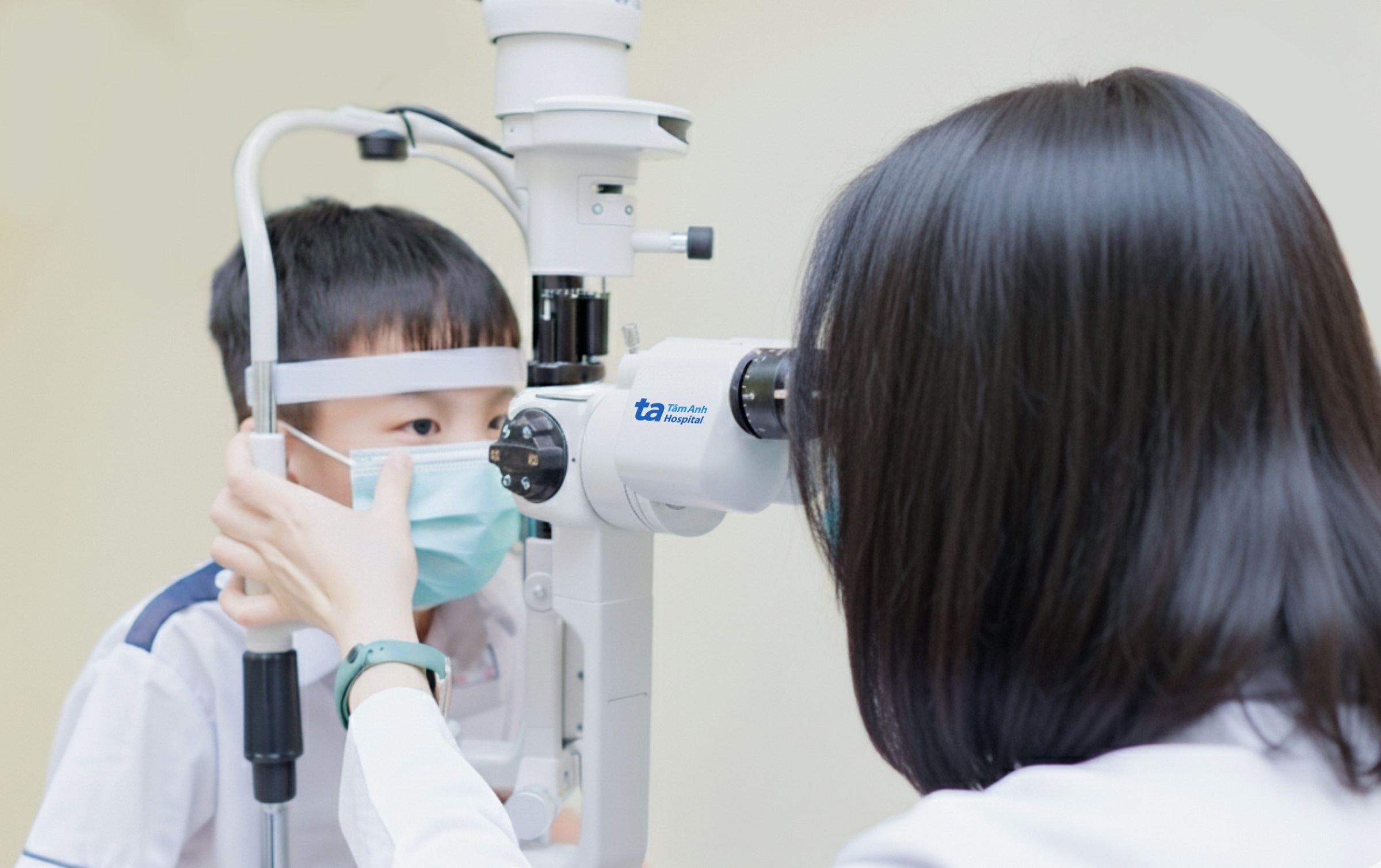Crowded places like public areas, schools, and daycare centers can easily spread eye diseases. Dr. Nguyen Duc Huy, from the High-Tech Eye Center at Tam Anh General Hospital in Ho Chi Minh City, advises parents to combine various methods, from lifestyle changes to nutritional supplements, to properly care for their children's eyes.
Maintaining eye hygiene can prevent bacteria and viruses from entering, thereby limiting eye diseases such as conjunctivitis, blepharitis, trachoma, and styes. Parents should guide children to develop the habit of washing their hands with soap before touching their eyes and avoid rubbing them. If participating in outdoor activities with dust and smoke, children should wear protective eyewear.
Equipping children with their own personal belongings, such as separate towels and swimming goggles, helps prevent the spread of eye diseases like pink eye (conjunctivitis). Parents can guide children to rinse their eyes with saline solution to remove dirt daily, especially after outdoor activities or coming home from the rain.
To prevent refractive errors (nearsightedness, farsightedness, astigmatism), the reading and learning environment should be well-lit. Children should sit with proper posture and maintain a reasonable distance (about 30-35 cm) between their eyes and books or screens while reading or writing. After every 20-30 minutes of studying, children should rest their eyes to prevent fatigue and improve concentration.
 |
A doctor examines a boy's eyes at the High-Tech Eye Center. Illustrative photo: Tam Anh General Hospital |
According to Dr. Huy, excessive use of phones, tablets, computers, and televisions can increase the risk of eye strain and worsen nearsightedness. Blue light from screens can damage the retina with prolonged exposure, potentially leading to eye strain and difficulty seeing objects clearly after looking at a screen.
Another significant harmful effect is that blue light from screens suppresses the production of melatonin, a hormone that promotes sleep. Using electronic devices before bed can lead to difficulty falling asleep, insomnia, and restless sleep. After 20 minutes of screen time, children should look at an object about 6 meters away for 20 seconds. This gives their eyes time to rest, reducing blurriness and fatigue.
Dr. Huy notes that children often don't realize they have reduced vision until the condition worsens. Some eye conditions can cause headaches, eye strain, and difficulty concentrating, leading to poor academic performance. More seriously, amblyopia (lazy eye) is difficult to treat if not detected before the age of 6-8.
Parents should take their children for eye exams every 6 months to detect refractive errors, glaucoma, and other related diseases early. Children with existing refractive errors need regular check-ups to adjust their glasses promptly, preventing rapid progression. Wearing the correct prescription glasses prevents glare and headaches.
Proper nutrition helps protect and strengthen eye health, preventing dry eyes, macular degeneration, cataracts, and the progression of nearsightedness. Children should eat foods rich in vitamins A, C, and E, zinc, lutein, and omega-3s. These nutrients are abundant in carrots, sweet potatoes, pumpkin, dark leafy greens (spinach, kale), salmon, tuna, eggs, and some fruits like oranges, blueberries, and papaya.
Nhat Minh
| Readers can submit questions about eye diseases here for doctors to answer. |












